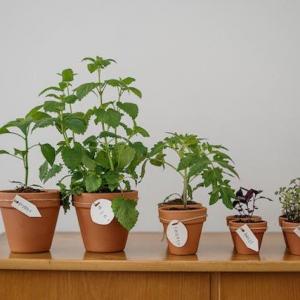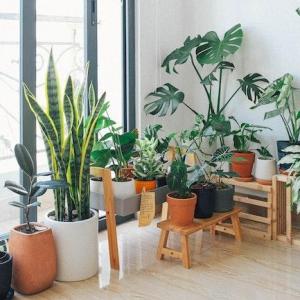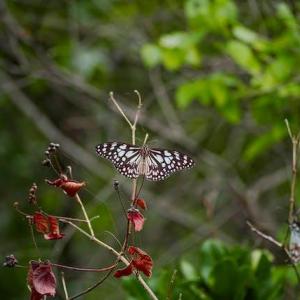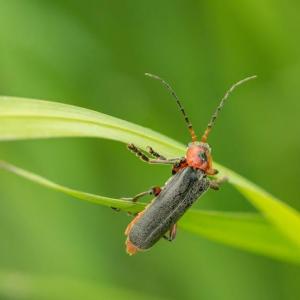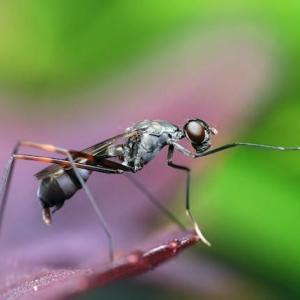
Prevention is Key:
The best way to manage pests and diseases is to prevent them from occurring in the first place. Here are some preventive measures to consider: - Choose Resistant Varieties: Select plant varieties that are known to be resistant to common pests and diseases in your area. This can significantly reduce the likelihood of problems.- Proper Plant Placement: Plant your garden strategically by grouping plants with similar needs together. This helps create optimal growing conditions and can deter the spread of pests and diseases.
- Crop Rotation: Rotate your crops each year to prevent the buildup of pests and diseases in the soil. This breaks their life cycle and reduces the risk of future infestations.
- Clean Tools and Equipment: Clean and sanitize your gardening tools and equipment regularly. This prevents the spread of pests and diseases from one plant to another.
- Good Hygiene Practices: Practice good garden hygiene by removing dead or diseased plant material promptly. This prevents the spread of diseases and eliminates hiding places for pests.
Attract Beneficial Insects:
Encouraging beneficial insects to thrive in your garden can help control pests naturally. Here are a few ways to attract these helpful creatures: - Plant Pollinator-Friendly Flowers: Plant a variety of flowers that attract bees, butterflies, and other pollinators. These insects not only help with pollination but also feed on pests.- Provide Shelter and Water: Create habitats for beneficial insects by adding features such as bee hotels, birdhouses, and water sources like birdbaths. This encourages them to stay and help control pests.
- Avoid Pesticides: Minimize or eliminate the use of pesticides, as they can harm beneficial insects. Instead, rely on natural predators to keep pest populations in check.
Practice Companion Planting:
Companion planting is the practice of planting certain plants together to enhance their growth and repel pests. Here are some popular companion planting combinations:- Marigolds and Tomatoes: Plant marigolds around tomato plants to repel pests like aphids and nematodes.
- Nasturtiums and Cucumbers: Nasturtiums act as a trap crop for pests, diverting them from cucumber plants.
- Basil and Tomatoes: Plant basil near tomatoes to repel insects like whiteflies and aphids.
- Chives and Roses: Chives planted near roses can deter aphids.
Use Natural Pest Control Methods:
There are several natural pest control methods that are effective and safe for both plants and the environment. Here are a few examples:- Handpicking: Inspect your plants regularly and manually remove pests such as caterpillars, slugs, or snails. Drop them into a bucket of soapy water to eliminate them.
- Insect Traps: Set up traps to catch and control specific pests, such as yellow sticky traps for flying insects or beer traps for slugs and snails.
- Beneficial Nematodes: Apply beneficial nematodes to the soil to control pests like grubs, slugs, and cutworms. These microscopic worms are harmless to plants and beneficial insects.
- DIY Sprays: Create homemade sprays using natural ingredients to repel pests. For example, a mixture of water, dish soap, and garlic can deter aphids, while a solution of water and cayenne pepper can keep squirrels away.
Improve Soil Health:
Keeping your soil healthy and balanced is crucial for preventing pest and disease problems. Here's how you can improve soil health:- Organic Matter: Add compost, well-rotted manure, or other organic matter to improve soil fertility and structure. Healthy soil supports healthy plant growth and makes them less susceptible to pests and diseases.
- Mulching: Apply organic mulch, such as straw or wood chips, around your plants to retain moisture, suppress weeds, and regulate soil temperature. This creates a favorable environment for beneficial soil organisms and helps prevent diseases.
- Proper Watering: Water your plants deeply and infrequently, encouraging roots to grow deeper. This helps plants become more resilient and less susceptible to pests and diseases.
- Balanced Nutrients: Ensure your plants receive the right nutrients by conducting a soil test. This allows you to adjust nutrient levels accordingly, preventing nutrient deficiencies or excesses that can weaken plants.
Practice Integrated Pest Management (IPM):
Integrated Pest Management is a holistic approach to pest control that combines multiple strategies to manage pests effectively. Here's how IPM works:- Monitor: Regularly inspect your plants for signs of pests or diseases. Identify the specific pests or diseases you're dealing with to determine the best course of action.
- Identify Thresholds: Determine the threshold at which action needs to be taken. Not all pests or diseases require immediate intervention, as some levels of damage can be tolerated.
- Cultural Control: Implement cultural practices such as proper watering, mulching, and pruning to create a healthy environment that discourages pests and diseases.
- Biological Control: Introduce beneficial insects or organisms that prey on pests. For example, ladybugs can control aphids, and nematodes can target specific soil-dwelling pests.
- Mechanical Control: Use physical barriers, such as row covers or netting, to prevent pests from reaching your plants. Handpicking or trapping pests can also be effective.
- Chemical Control as a Last Resort: If all other methods fail, consider using low-toxicity, organic-approved pesticides as a last resort. Always follow the instructions carefully and apply them sparingly and selectively.
Managing pests and diseases in the garden without harmful chemicals is not only better for the environment but also promotes a healthier and more sustainable approach to gardening. By focusing on prevention, attracting beneficial insects, practicing companion planting, using natural pest control methods, improving soil health, and implementing integrated pest management, you can effectively manage pests and diseases while maintaining a thriving and chemical-free garden. Remember, it's all about working with nature rather than against it to create a balanced and harmonious ecosystem in your own backyard.
Article
Be the first comment
Elite Article





